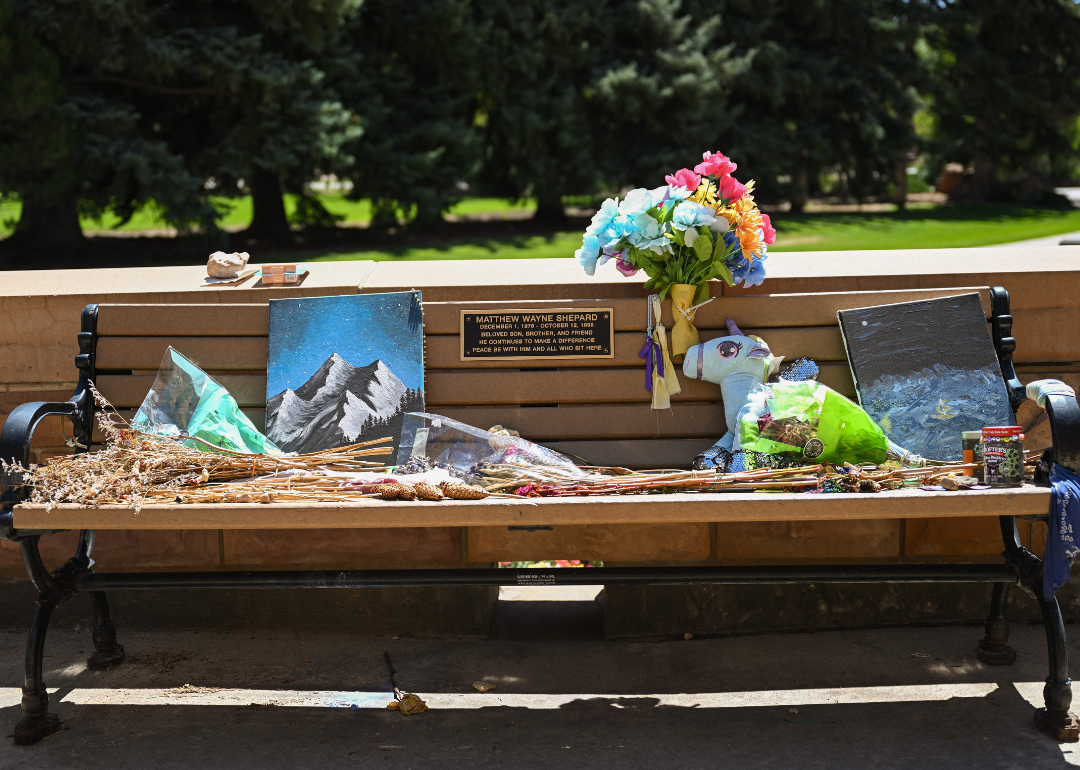Anthony Constantine // Shutterstock Most of the best-known and pivotal moments in LGBTQ+ history–and the places associated with them–revolve around East and West Coast cities like San Francisco and New York or LGBTQ+-friendly beach towns like Provincetown, Massachusetts. Of course, not all LGBTQ+ Americans live in coastal metropolises. In fact, some of the states with the largest LGBTQ+ populations are in the Midwest, South, and Western regions of the United States, according to the Williams Institute. And between 15% and 20% of LGBT Americans–roughly 2.9-3.8 million people–live in rural areas, according to 2019 estimates. Queer people are and have always been dispersed throughout the country, existing in every state and community. LGBTQ+ history is likewise a part of every state, though much of it is less well-known than landmark events like Stonewall or the assassination of Harvey Milk. Nonetheless, all LGBTQ+ communities’ activism and contributions have played an essential role in bolstering queer visibility and acceptance and gaining fundamental rights that were frequently denied. To celebrate these contributions, Stacker compiled a list of landmark LGBTQ+ history in every state using a variety of news, historical, and academic sources. You may also like: What kind of data is your car collecting about you? Alabama Ken Wolter // Shutterstock Students at the University of Alabama founded the Gay Student Union in 1983 The first of its kind in the state, the University of Alabama Gay Student Union paved the way for other LGBTQ+ student groups to form across Alabama, including the Auburn Gay & Lesbian Association in 1993. Auburn students’ struggle to start the group made headlines after the school’s Student Government Association refused to give the group a charter, and then-Alabama Gov. Gary Hunt signed a bill prohibiting LGBTQ+ student groups from using public funds or school buildings. The university sued both the group’s proponents and those opposed in a case that ended up in federal court. Alaska Darryl Brooks // Shutterstock The small town of Barrow was home to Alaska’s first gay marriage in 2014 Voters in Alaska banned same-gender marriages in 1998 by a constitutional amendment, the first of its kind in the nation. In 2014, a federal judge struck down the ban, and a magistrate in the Arctic Coast town of Barrow waived the three-day waiting period between getting an application and performing the ceremony, allowing for the first legal lesbian wedding on Oct. 14, 2014. Arizona Max Lindenthaler // Shutterstock An Arizona native and Navy veteran created the transgender pride flag in 1999 Monica Helms grew up in Phoenix and served in the Navy for eight years. Ten years later, Helms came out as transgender and became an activist working for trans visibility and equality. She created the pink, blue, and white striped flag to represent trans pride, mixing the traditionally gendered colors and adding a white line in the middle to represent gender-nonconforming, transitioning, and intersex people. In 2000, Helms’ flag debuted at Phoenix’s Pride celebrations, and it has since spread worldwide. Arkansas Brandon Rush // Wikimedia Commons George Takei, a gay Japanese American actor, director, author, and activist, was detained at Rohwer War Relocation Center with his family during WWII Most famous for his portrayal of Sulu in “Star Trek,” George Takei was only 5 years old when he and his family were taken from their California home, transferred to a train by armed guards, and sent to an internment camp in Arkansas, the easternmost camp in the U.S. Takei and his family were later transferred to another camp, the Tule Lake Segregation Center, in northern California. His family lost their home while incarcerated and were forced to live on the streets when the Second World War was over. Today, Takei is known for his activism for LGBTQ+, immigrant, and Asian American rights. California Liz Hafalia/The San Francisco Chronicle via Getty Images Harvey Milk Plaza in San Francisco commemorates Harvey Milk, an LGBTQ+ politician and activist known as the “Mayor of Castro Street” In 1978, Harvey Milk became the first out gay man to be elected to public office when he was voted onto the San Francisco Board of Supervisors on a platform of LGBTQ+ rights. Milk was a community organizer and defender of marginalized communities’ rights. The same year he was elected, he and the city’s progressive mayor, George Moscone, were assassinated at San Francisco’s City Hall. In memory of Milk, the intersection of Castro and Market Streets–the heart of the city’s historic LGBTQ+ neighborhood–was designated Harvey Milk Plaza. Colorado Anya Semenoff/The Denver Post via Getty Images The First Unitarian Church of Denver has a long history of LGBTQ+, suffrage, and antiracist activism Initially built in the 1890s, the First Unitarian Church of Denver building has been a hub for several generations of activism, from civil rights groups in the 1960s to some of the first gay rights groups to movements as recent as Black Lives Matter. The church hosted same-gender weddings in the mid-’70s when gay marriage wasn’t yet technically legal in Colorado and continued doing so in 2014 when the state legalized same-gender marriage. The First Unitarian Church of Denver building was designated a historic landmark in 2017. Connecticut Pi.1415926535// Wikimedia Commons The James Merrill House was the home of James Merrill, a Pulitzer Prize-winning gay poet James Merrill was born in New York City in 1926. Renowned for his poetry, Merrill was considered one of the leading writers of the 20th century. Throughout his lifetime, he won the Pulitzer Prize, two National Book Awards, and several other honors for his work. He was also Connecticut’s first poet laureate, and he lived in a house in Stonington for several decades with his partner, David Jackson. Parts of the house have been preserved since Merrill’s death in 1995 and are sometimes open to the public. The house also hosts a writers’ residency. Delaware
Landmark LGBTQ+ history in every state















